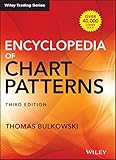
Sentiment: Bullish
Direction: Reversal
What Is The Complex Inverse Head And Shoulders Chart Pattern?
A Complex Inverse Head and Shoulders is a bullish reversal pattern, most commonly found at the bottom of a trend.
The pattern behaves similarly to a regular inverted head and shoulders, but includes more than one head or more than one left or right shoulder within the formation.
How To Identify The Complex Inverse Head And Shoulders Pattern?
Price action forms an inverted head and shoulders pattern, with one or more additonal “heads” or “shoulders” added to the structure.
See inverse head and shoulders for a more detailed description.

What Is The Psychology Behind The Complex Inverted Head And Shoulders Pattern?
The Complex Inverted Head and Shoulders pattern is a variation of the standard inverse head and shoulders pattern. Like the original, it is a bullish chart pattern that can provide traders with valuable insights into the market’s psychology.
The pattern typically takes longer to form than the standard inverse head and shoulders pattern and is a sign of a potential trend reversal.
Traders interpret the pattern as a sign of an extended tug of war between buyers and sellers, with both sides struggling to gain control.
The psychology behind the complex inverse head and shoulders pattern is similar to the standard inverse head and shoulders pattern, but with more complexity.
In the complex inverse head and shoulders pattern, there may be two or more troughs in between the head or shoulders, creating a more complex shape.
This indicates that sellers attempted to push the price lower several times, but ultimately failed to sustain the losses.
Traders view the pattern as a sign that the buyers are gaining control of the market, and sellers are losing momentum.
Once the price breaks above the neckline, it’s a signal that the trend has reversed, and traders may enter long positions.
How To Trade The Complex Inverted Head And Shoulders Pattern?
To trade the Complex Inverse Head and Shoulders pattern, traders typically wait for the price to break through the neckline with a strong volume surge.
The breakout should ideally occur on higher than average trading volume. This confirms that there is significant buying pressure behind the move.
Traders may enter a long position once the price breaks above the neckline. A stop loss is placed below the lowest trough of the pattern.
Alternatively, traders may wait for a throwback to the neckline before entering a long position. This approach can provide a better risk-to-reward ratio. Using this method, the entry price is closer to the neckline and the stop loss can be placed tighter.
However, it may also result in missing out on some of the initial gains from the breakout. Ultimately, the best approach will depend on the trader’s risk tolerance, trading style, and market conditions.
It’s worth noting that the complex inverse head and shoulders pattern can also result in a false breakout. In this situation, price briefly breaks through the neckline before reversing course.
Traders should be aware of this possibility. Also be sure to use technical indicators and other tools to confirm the validity of the breakout. Access these tools at TradingView.
Complex Inverted Head And Shoulders Performance Expectations Explained
A bullish reversal is expected the majority of the time.
To find potential targets, measure from the neckline to the lowest trough forming the lowest head.
Project the measurement multiplied by 71% to the neckline.


